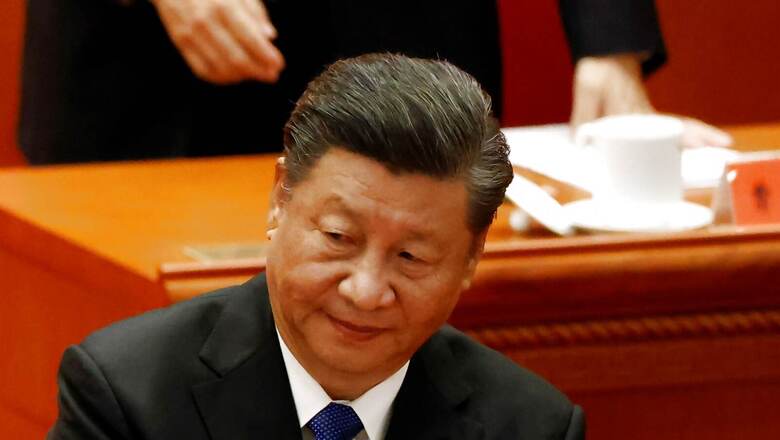
views
India is still not sure why China staged the bloodshed in Galwan in mid-June 2020, thereby torching the bilateral understandings and confidence-building measures, so meticulously crafted over the preceding three decades? These instruments had helped maintain peace and tranquility along the 3488-km long India-China boundary. What went wrong? What are China’s intentions? What should be India’s approach? Is it at all possible to restore some normalcy in ties or are the world’s two most populous nations destined to be locked in a hostile relationship for some time to come?
“Nothing in history prepared either India or China to deal with the other,” observes former National Security Adviser Shivshankar Menon, adding that we “have a long history of misreading each other”. Contrary to the popular perception India and China were never immediate neighbours till 1950 when China marched into and occupied Tibet. Hitherto we had limited contacts which did not impinge upon each other’s security interests.
Glowing accounts on India by Chinese travellers like Fa-Hien or Xuan Zang had made little impression on Chinese revolutionary leaders like Mao Zedong who held a poor opinion of India and Indians. Says Ambassador Shyam Saran—“India was regarded as a teacher by negative example, a failed and fallen country which had been subjugated and enslaved virtually without resistance from its people.” Premier Zhou Enlai even told Kissinger in 1972—“India is a highly suspicious country. It is quite a big country, sometimes it puts on airs of a big country, but sometimes it has an inferiority complex.”
And Beijing appears to have decided that “India was punching above her weight” and needed to be brought down a few notches. The Ladakh misadventure was therefore meant to demonstrate its military prowess, embarrass India, impact her economic development, encourage South Asian nations to toe the Chinese line, and undermine India’s standing with Washington as well as other capitals.
Once again, like in 1962, India was caught unawares in May 2020, but this time held her ground and even sprang a surprise or two on the aggressors. An uneasy situation prevails as a result, with tens of thousands of troops and heavy weaponry amassed on both sides of the Line of Actual Control (LAC). There is a real danger of hostilities breaking out either by design or miscalculation. Chinese PLA has refused to vacate the aggression in Hot Springs and Depsang sectors. Several rounds of ministerial discussions and 13 rounds of Corps Commander-level talks have produced limited results. This state of cold conflict is likely to prevail in the short to medium term.
What China Thinks
Sinologists aver that due to its relative isolation in history, China is not used to dealing with other nations on equal terms. Instead, China views relations in hierarchical terms through the lens of relative power. Responding to my question at a recent webinar organised by the India America Friendship Association, Ambassador Shyam Saran elaborated that between 2003 and 2007 China believed that India was narrowing the comprehensive national power gap, with economic growth of 9-10 per cent per annum. That is when the “Agreement on the Political Parameters and Guiding Principles for the Settlement of the India-China Boundary” was signed in 2005; China was willing to concede primacy to India in South Asia and also wanted a bilateral strategic partnership agreement to be concluded.
The matrix changed after the 2008 financial crisis. China now thinks that it enjoys a double asymmetry of power, with the US on one hand—where the gap is shrinking—and India on the other, where it is expanding. As such, Xi Jinping’s China wants India to be duly deferential and engage on Chinese terms.
Accordingly, China could possibly insist that India does not pursue QUAD; drop her opposition to BRI (Belt and Road initiative) including CPEC (China-Pakistan Economic Corridor) which passes through Pakistan-occupied Kashmir; review her stance on Tibet; dilute relations with the US and Taiwan; settle the boundary issue as per Chinese perception and refrain from taking any punitive economic or political measures.
It goes unsaid that in the unlikely event of India accommodating China, its demands would escalate further. Given her size and potential, India could eventually emerge as a counterweight to China. It has therefore been Beijing’s endeavour to keep India off-balance and boxed in South Asia, inter alia by propping up Pakistan and supporting Indian insurgent groups, especially in the North-eastern region.
Steps India Must Take
To tide over one of the biggest crises ever faced by India she has to and is following a multi-pronged approach. First and foremost, it is essential to keep the dialogue going at appropriate levels to try and defuse the situation peacefully. Since the decision to breach the tranquillity on the boundary could have only been taken with President Xi’s approval, a resolution would also require the highest-level political intervention. However, the time is not yet ripe for the two principals to meet, all the more so because the Indian side feels betrayed. Nonetheless, a broad agreement would have to be hammered out by the diplomats, for the consideration of the leaders, the prospects of which appear dim at the moment.
Two, India would continue to strengthen infrastructure along the LAC as well as further shore up her defensive and offensive capabilities. India does not seek conflict with China yet the ability to take the fight across the LAC is a desirable deterrent. Granted this would be a drain on India’s resources but there is no other option.
Three, it is ironic that India has become highly dependent on China for critical products including API (active pharmaceutical ingredients), consumer electronics, machinery and components. Notwithstanding 80 per cent of Indians having a negative opinion of China, and a popular sentiment favouring boycott of Chinese goods, bilateral trade has soared some 30 per cent in 2021 crossing $100 billion for the first time. The sooner we develop alternative sources of imports the better it would be.
Meanwhile, we need to continue strengthening ties with important multilateral groupings and key capitals like Washington, Moscow, Paris, Tokyo and Tel Aviv to improve our leverage, have access to technology, intelligence and military hardware, as well as requisite diplomatic support, especially at the UN Security Council. If Beijing views it as a zero-sum game so be it. India has hitherto been quite mindful of Chinese sensitivities, but that cannot be a one-way street.
Last but not least, everything hinges on rapid GDP growth. India’s security, attractiveness and global standing are all as strong as her economy. It is hoped that we can fast-track discussions on a slew of comprehensive economic partnership agreements that are in the pipeline. Next-generation economic reforms are the need of the hour to attract FDI in the manufacturing sector.
Opines former envoy to China, Vijay Gokhale—“The real competitor for China is the US. We approach China through the bilateral perspective, the Chinese approach India through the perspectives of Sino-US relations. We may therefore see several years of heightened tension. There is consensus that we have moved from a state of peaceful coexistence to armed coexistence.” It is moot if China views relations through such a prism, but there is no denying the ominous clouds over our bilateral ties.
The author is Former Envoy to South Korea and Canada and Official Spokesperson of the Ministry of External Affairs. The views expressed in this article are those of the author and do not represent the stand of this publication.
Read all the Latest Opinions here
















Comments
0 comment